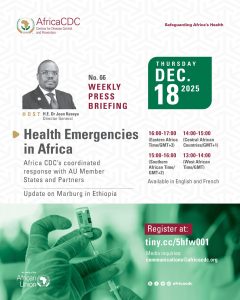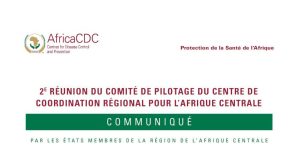Africa CDC launched its framework to fight antibiotic resistant infections during the eighth edition of the Advanced Courses on Diagnostics convened by the Fondation Mérieux. Antibiotic resistant infections occur when bacteria, viruses, and other microorganisms change in ways that make medications ineffective against them. In Africa, antibiotic resistance is already a major problem for malaria, tuberculosis, typhoid, meningitis, gonorrhea, and dysentery. Recognising the urgent need for action, the World Health Assembly adopted the Global Action Plan to address the challenge in May 2015. The Africa CDC Framework describes priorities for African Union Member States to improve diagnosis and treatment of, collect more accurate data about, and strengthen policies to address antibiotic resistance.
‘Africa CDC developed a remarkably comprehensive framework, fully aligned with the Global Action Plan and the Global Antimicrobial Resistance Surveillance System which if fully implemented will address the growing threat of antibiotic resistant infections’, said Dr Marc Sprenger, Director of the Antimicrobial Resistance Secretariat at the World Health Organisation who chaired the launch.
“Antimicrobial resistance is a major threat to Africa’s economic growth and structural transformation goals. We need to urgently strengthen partnerships and leverage our existing assets across Africa to fully implement the Africa CDC Framework for Antimicrobial Resistance,” said Dr. John Nkengasong, the Director of the Africa Centres for Disease Control and Prevention.
To implement the Framework, Africa CDC will establish the Africa CDC Antimicrobial Resistance Surveillance Network (AMRSNET), a network of public health leaders, epidemiologists, laboratory policy experts and other stakeholders from human, animal and environmental health. The Framework will be implemented in collaboration with the World Health Organisation. During this meeting, attendees from various African countries proposed a set of priorities, from the framework, for AMRSNET to address antibiotic resistance.
Many factors contribute to the emergence, persistence, and transmission of antibiotic resistant microorganisms. Although strains arise naturally due to genetic changes in microorganisms, their emergence is accelerated by inappropriate use of antimicrobial agents in humans, animals, and the environment, including self-treatment of illness by lay persons, inappropriate prescribing by healthcare providers, and addition of antibiotics to feed and “promote growth” and prevent illness among animals reared for food consumption.
Antimicrobial resistance emergence may be further amplified by substandard and fake antibiotics, which impair treatment of existing infections. Transmission is further accelerated by inadequate infection prevention and control in healthcare facilities, poor hygiene and sanitation, and limitations in public health prevention programmes, including immunisation, sanitation and sexual health. Globally, drug resistance causes an estimated 700,000 deaths each year, and, if current trends continue, antibiotic resistance could result in over 10 million deaths per year and over 100 trillion United States dollars lost in output globally by 2050.
Within the next 5 years, AMRSNET will work to improve detection of antibiotic resistant infections in humans and animals, delay its emergence, limit transmission, and mitigate harm among patients infected. To achieve these goals, AMRSNET will advocate for policies and laws to enable long-term prevention and control and strengthen human resources capacity.






